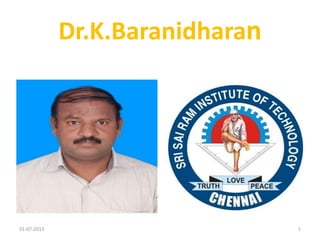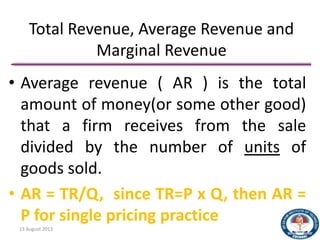The document discusses the concept of markets, their types, conduct, performance, and structures, emphasizing the evolution from traditional to modern definitions driven by technology. It details various competitive market situations including perfect competition, monopoly, and oligopoly, along with their characteristics and implications for sellers and buyers. Additionally, it examines market efficiency, pricing strategies, and the importance of product differentiation, contributing to a comprehensive understanding of managerial economics in market dynamics.









































